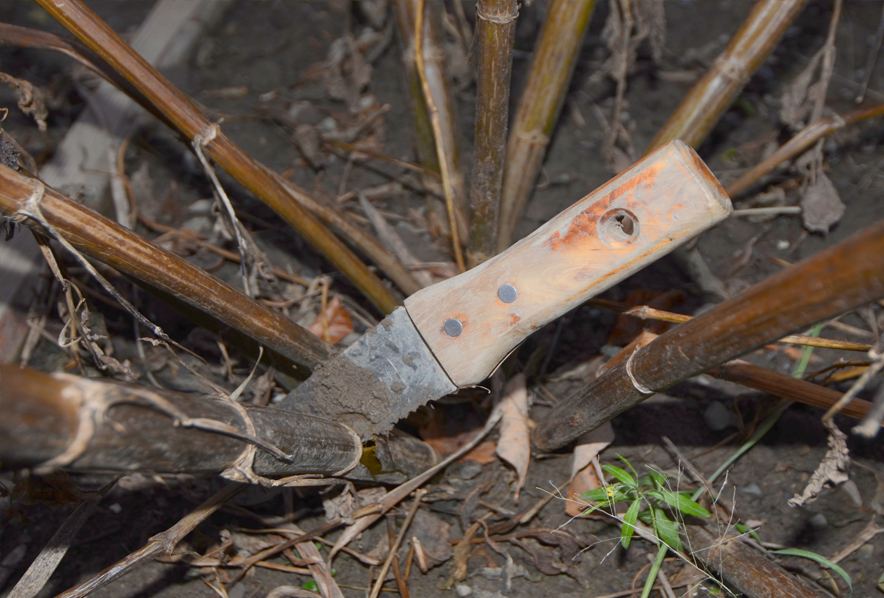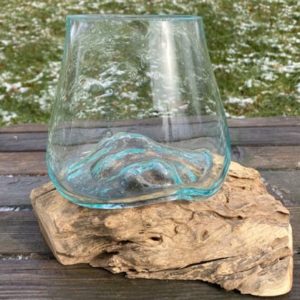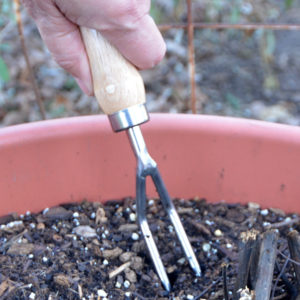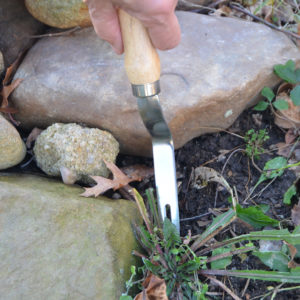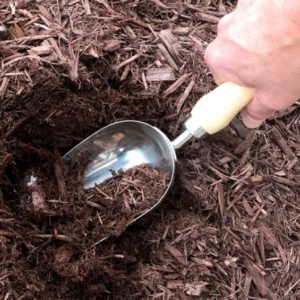Description
The Hori-Hori,
Japanese Gardening Knife
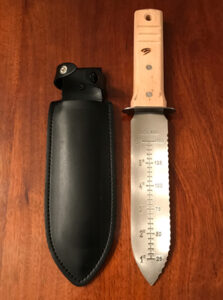 The Hori-Hori, pictured above is perhaps the most versatile and most enduring hand tool ever created for the gardener. The tool consists of a stainless steel blade securely fixed into a wooden handle. Horis range in size from 11-15 inches. The Harvesting History Hori is 12 inches with a 7 inch blade and a 5 inch hardwood handle. The 2-inch diameter stainless steel blade is slightly concave with one serrated edge and one knife edge. Etched markings at the center of the blade indicate how deep the blade has gone into the soil.
The Hori-Hori, pictured above is perhaps the most versatile and most enduring hand tool ever created for the gardener. The tool consists of a stainless steel blade securely fixed into a wooden handle. Horis range in size from 11-15 inches. The Harvesting History Hori is 12 inches with a 7 inch blade and a 5 inch hardwood handle. The 2-inch diameter stainless steel blade is slightly concave with one serrated edge and one knife edge. Etched markings at the center of the blade indicate how deep the blade has gone into the soil.
Horis were created by the Japanese probably in the 1200s and made of forged iron. The Japanese would hike high into the mountains surrounding their villages to harvest wild root vegetables like radishes and turnips growing in the higher altitudes. The hikes were rigorous so the farmers needed to carry very little because they would be returning with backpacks loaded with heavy vegetables. The shape of the blade with a serrated edge and a smooth knife edge allowed the foragers to harvest by digging deep and slicing through roots and tough vegetation. The Hori was developed because it could perform all the required tasks and was sturdy enough to last for decades.
During the Middle Ages, the Hori was used as both a gardening tool and a weapon. From the Japanese villages a class of warrior-farmers arose known as the Ashigaru. These warriors became an important part of Japanese warfare. They were not paid for their services, but they were allowed to take valuables from the dead that they had killed.
Today, the magnificent design of this tool makes it useful for nearly all the manual work required in and around the garden.

